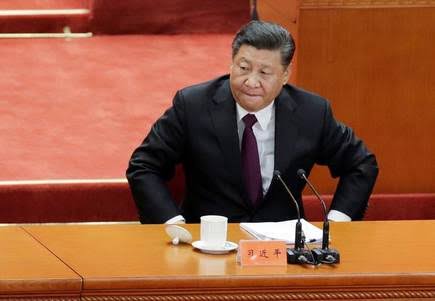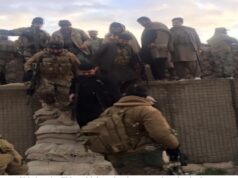To Checkmate China, India Will Simply Recognize Tibet as a free country and send the fight into Tibet

China is already jittery and there is dissonance between the Western Theatre Command and the PLA on one hand and PLA and Chinese Communist Party on the other hand. Such information can be summarized from the utterings of Global Times, Chinese TV, Chinese internet sites, American Intelligence releases and our own sources.
On August 29, President Xi Jinping told senior leaders that China must build an “impregnable fortress” to maintain stability in Tibet, protect national unity and educate the masses in the struggle against “splittism”. The same night PLA troops carried out provocative military movements South of the Pangong Tso, prompting India to take pre-emptive action and undertake measures to strengthen positions to thwart Chinese intentions.
So it is very clear that CPC is fully aware of the excellent achievements of the SFF troops and now is very apprehensive of its impact on Tibet. That is why it is talking about SPLITTISM.
The latest Chinese move and India’s pre-emptive counter move, has happened in spite of the ongoing diplomatic-military talks in resolving the four-month-old violent face-offs between Indian and Chinese troops at Depsang, Galwan, Hot Springs and Finger areas on the North bank of Pangong Tso. Several rounds of military negotiations, Working Mechanism for Consultation and Coordination (WMCC) meetings, including the last one on August 20, have yielded no worthwhile results.
On the ground, China had begun to actively fortifying its positions, constructing bunkers, and improving roads, particularly laterals from the highway to the border areas. There have been reports of deployment of J-20 stealth fighters and Air Defence radars.
India also undertook large-scale deployment of matching forces and is preparing for a prolonged deployment, as long as required. Even the Chief of Defence Staff had stated that a military option to deal with transgressions by the Chinese People’s Liberation Army (PLA) in Ladakh is on the table, but will be exercised only if talks between the two armies and the diplomatic option are unfruitful.
The provocative movement by the PLA in the intervening night of August 29-30 was a planned follow up to Xi Jinping’s orders to the CPC, the government and PLA to “solidify border defences in Tibet and ensure frontier security, national security, and enduring peace and stability” in the Tibet region. This was at the seventh Central Symposium on Tibet Work in Beijing on August 28-29. This important forum for Tibet policies, had the first such gathering since 2015.
Taking the conflict from the North to the South of Pangong Tso is indicative of China’s Plans and the greed to grab more Indian territory. There are multiple routes converging into Chushul, from the East along Pangong Tso and the Spanggur Tso, from Tangtse in the Northwest, and from Dungti-Nyoma in the South, along the Indus. This was the area of bloody battles at Gurung Hill, Magar Hill and Rezangla in 1962.
The Indian Army has successfully stopped the PLA move and thus given a tight slap to their military leadership. Now Indian Army is in occupation of tactically advantageous positions on the heights dominating the corridors leading to the Chushul bowl, with corresponding adjustments in disposition of tanks, ICVs, artillery and combat support elements; also, readjustment of reserves to cater to new contingencies. May be we need to create another Corps HQ to look after Kargil and Siachen Sectors and leave 14 Corps to focus on the Chinese front only.
The present ‘autonomous’ of the Tibet Autonomous Region has an area of 2.5 million square kilometres, Tibet is around one fourth the size of China. In 1965, China cleverly created the provinces of Gansu, Qinghai, Sichuan and Yunnan out of Tibet, in order to confuse the issue internationally. What remains as TAR is also about one eighth of the whole of China. Xi Jinping is now worried of ‘splittism’ in not only TAR but all the other four so calked Provinces.
Tibet has the third largest ice reserve. Some of the major rivers flowing through South Asia and Southeast Asia originate from Tibet. The control over rivers flowing into all the countries bordering Tibet is an obvious lure.
Tibet has precious metals and minerals like chromium, gold, iron, magnesium, uranium, and silver. It has coal, gas oil, and some rare earth minerals. All these natural resources contribute to China’s newfound power.
To continue checking China, it is critical that India’s armed forces proactively deal with China in all the theatres, as the PLA has mobilised troops for exercises all along, including opposite Sikkim and Arunachal Pradesh.
Side by side, the clarion call for decoupling from China economically must be pursued with full vigour to get out of the trappings of trade dependencies on China and along with that the blurring lines between investment, advertisement, ideology, and propaganda. The Prime Minister’s Independence Day declaration of the cyber policy must come into effect at the earliest.
India’s bilateral relationship with China cannot be disassociated from the border issue. The India-China border issue is closely linked with the Tibetan Issue. Given Xi Jinping’s hawkish stance towards Tibet and India, it would be naïve to expect resolution of the border issue. It makes eminent sense to not only rally international support but also increase our interaction with the Tibetan Govt in Exile.While India should formally recognize this Govt, it must also ask the USA and other countries to do so.
Time has come for India to play its Tibetan Card. Tibetan freedom fighters are waiting for the World support.




